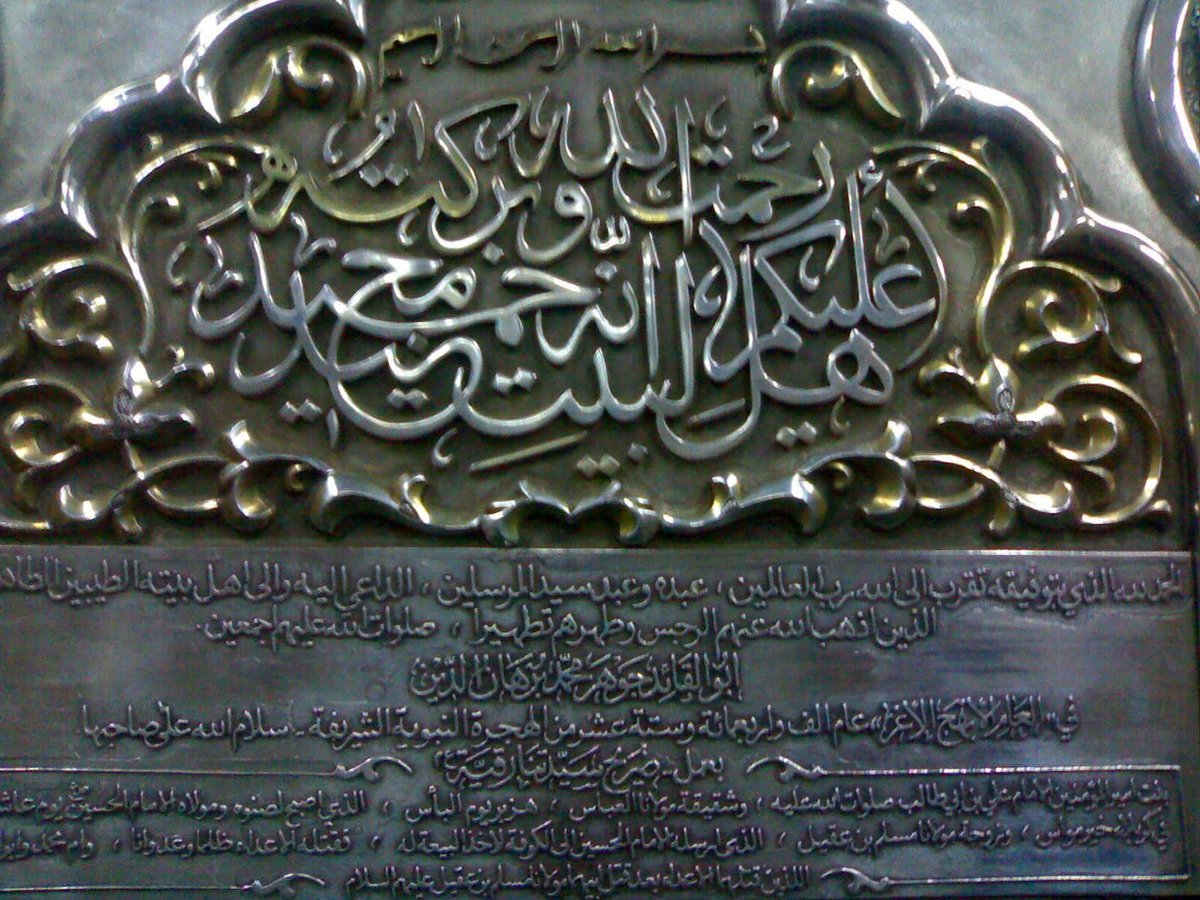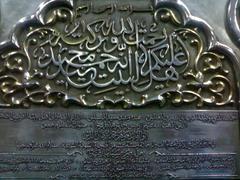
Mausoleum of Sayyida Ruqayya: Visiting Hours, Tickets, and Historical Significance in Cairo
Date: 14/06/2025
Introduction
The Mausoleum of Sayyida Ruqayya, nestled in Cairo’s historic al-Khalifa district, stands as a testament to the city’s rich Islamic heritage, architectural ingenuity, and spiritual devotion. Constructed in 1133 CE during the Fatimid dynasty, this revered site honors Sayyida Ruqayya—a direct descendant of the Prophet Muhammad. Her shrine not only remains a focal point of Shi’a veneration but also embodies the Fatimid era’s architectural brilliance, with its distinctive ribbed dome and exquisite stucco mihrab. Today, the mausoleum serves as a living cultural and religious landmark, attracting pilgrims, historians, and travelers from around the world (MIT OpenCourseWare; ETB Tours Egypt; Lonely Planet).
This guide provides a detailed overview of the mausoleum’s historical background, religious significance, architectural features, and practical visitor information, ensuring a respectful and enriching experience for all.
Historical and Spiritual Background
Origins and Patronage
The mausoleum was commissioned in 1133 CE by Fatimid Caliph al-Hafiz, inspired by a visionary dream that led to the discovery of the tomb. The Fatimid dynasty, noted for their Isma’ili Shi’a faith, promoted the veneration of the Prophet’s descendants (Ahl al-Bayt) as a core element of their religious and political identity. The shrine to Sayyida Ruqayya, believed to be the granddaughter of the Prophet Muhammad and daughter of Imam Husayn, became a powerful symbol of piety and legitimacy for the Fatimids (MIT OpenCourseWare; Wikipedia).
Sayyida Ruqayya’s Spiritual Legacy
Sayyida Ruqayya is deeply revered, especially within Shi’a tradition, as a symbol of innocence and endurance linked to the tragic events of Karbala. Her story resonates with pilgrims, particularly during Muharram and Safar, when commemorations of Karbala reach their peak. The shrine is a place of communal prayer, supplication, and remembrance, attracting devotees from across the Islamic world (ETB Tours Egypt).
Architectural Features
Exterior
The mausoleum’s facade is a harmonious example of Fatimid funerary architecture, featuring a tripartite portico that leads to a domed sanctuary. The ribbed dome, set atop an octagonal drum, is supported by intricate muqarnas (stalactite squinches) and decorated with geometric and floral stucco grilles that filter natural light into the chamber. Trefoil and lobed windows further adorn the exterior, reflecting the artistry of Fatimid craftsmen (Archnet; Lonely Planet).
Interior
Upon entering, visitors encounter a symmetrical sanctuary dominated by the central tomb. The mihrab—an exquisitely carved stucco prayer niche—stands out as one of Egypt’s finest, with radiating ribs and arabesques reminiscent of nearby Fatimid monuments, such as the al-Aqmar Mosque. The cenotaph, inscribed in Kufic script, is the focus of veneration, even though historical evidence of Sayyida Ruqayya’s burial here remains inconclusive. The interplay of filtered sunlight and intricate stucco creates a serene, contemplative atmosphere (Archnet; Wikipedia).
Cultural and Religious Significance
Pilgrimage and Devotion
The mausoleum is a major pilgrimage site, especially for Shi’a Muslims, but is also respected by Sunnis. Pilgrims often recite Qur’an, light candles, and offer prayers for intercession. The shrine is especially vibrant during commemorative festivals, with communal prayers, charitable acts, and gatherings fostering a sense of unity and continuity with centuries-old traditions (ETB Tours Egypt).
Community and Women’s Spirituality
Women in particular seek Sayyida Ruqayya’s intercession for family, health, and personal matters, making the shrine a sanctuary for female spirituality and resilience. Annual commemorative events, including the “urs” (death anniversary), underscore the mausoleum’s role as a center of spiritual and social life.
Interfaith and Cultural Dimensions
Beyond its religious function, the mausoleum is integral to Cairo’s cultural fabric, drawing visitors of diverse backgrounds and serving as a living classroom for Islamic history and art. Local guides and caretakers enhance the educational experience with stories and historical context (ETB Tours Egypt).
Restoration and Preservation
The shrine has survived centuries of political upheaval and urban change, thanks to ongoing restoration and conservation efforts, especially in the last century. These projects have preserved the delicate stucco work, ensured structural stability, and maintained the mausoleum’s accessibility for worship and tourism (Lonely Planet).
Visitor Information
Location and Getting There
- District: Al-Khalifa (within al-Qarafa/City of the Dead), Cairo
- Nearby landmarks: Shrines of Sayyida Nafisa, Sayyida Atika, Mosque of Ibn Tulun
- Transport: Easily reached by taxi, ride-sharing apps, or public transport. Nearest metro: Sayyida Zeinab (Line 1), followed by a short drive or walk (Lonely Planet).
Visiting Hours and Tickets
- Hours: Daily, 8:00 AM – 5:00 PM (closed on major Islamic holidays; check ahead for changes)
- Entry: Usually free, but a 50 EGP fee may be charged for tourists at certain times; discounts for students and seniors with ID
- Donations: Welcomed and appreciated for maintenance
Accessibility
- Some steps and uneven surfaces may limit access for those with mobility impairments; assistance is available and recommended
- No dedicated visitor facilities or restrooms on site
Dress Code and Etiquette
- Required: Modest attire (shoulders, arms, legs covered); women should bring a scarf for hair covering
- Shoes: Remove before entering carpeted areas
- Photography: Permitted for architecture with discretion; avoid photographing people or rituals without consent
Safety and Tips
- Site is safe during daylight; keep valuables secure and be aware of surroundings
- Drink only bottled water; bring cash for donations or small purchases
- Engage respectfully with locals and pilgrims; avoid sensitive topics unless invited
Nearby Attractions and Suggested Itineraries
- Walking tours: Combine visits to Sayyida Nafisa, Sayyida Atika, and Imam Shafi’i Mosque for a comprehensive exploration of Cairo’s sacred geography
- Islamic Cairo: Extend your itinerary to include Al-Azhar Mosque and Ibn Tulun for further architectural marvels
- Cultural sites: Gayer-Anderson Museum and Khan El Khalili bazaar are within reach for broader cultural experiences
Frequently Asked Questions (FAQ)
Q: What are the mausoleum’s visiting hours?
A: Generally open daily from 8:00 AM to 5:00 PM; hours may vary on holidays.
Q: Is there an entrance fee?
A: Usually free, but a nominal fee (50 EGP) may be charged for tourists. Donations are appreciated.
Q: How do I get there?
A: Located in al-Khalifa district, accessible by taxi, ride-share, or public transport; nearest metro is Sayyida Zeinab.
Q: Is the mausoleum accessible for visitors with disabilities?
A: Some areas are difficult to access due to historical architecture; limited wheelchair access.
Q: Are guided tours available?
A: Not official, but local guides can be arranged via hotels or tour agencies.
Q: Is photography allowed?
A: Yes, with discretion; avoid photographing people or rituals without consent.
Visuals and Media
Practical Tips for Your Visit
- Visit on weekday mornings for a quieter atmosphere.
- Dress modestly and bring a scarf (women).
- Carry small cash for donations.
- Allocate 30–45 minutes for your visit.
- Engage respectfully and observe religious practices.
- Bring bottled water and wear comfortable shoes.
Conclusion
The Mausoleum of Sayyida Ruqayya is a beacon of Cairo’s spiritual and architectural heritage, offering a unique window into the Fatimid era and the ongoing traditions of veneration. Whether you’re a pilgrim, historian, or traveler, a visit here promises not only historical insight but also a profound sense of connection to the city’s living history. Plan thoughtfully, respect local practices, and enhance your journey with resources like the Audiala app for the latest updates and guided content.
Sources and Further Reading
- Fatimid Architecture of Cairo – MIT OpenCourseWare
- ETB Tours Egypt: Shrine of Sayyida Ruqayya
- Mashhad of Sayyida Ruqayya – Wikipedia
- Shrine of Sayyida Ruqayya – Lonely Planet
- Visiting the Mausoleum of Sayyida Ruqayya in Cairo: Hours, Tickets, and Travel Tips – Lonely Planet
- Springer Reference, Fatimid Funerary Architecture
- Archnet: Mashhad of Sayyida Ruqayya
Plan your visit with the Audiala app for up-to-date information, guided tour bookings, and exclusive content about Cairo’s historical sites. Follow us on social media for more insights and travel tips.


































